Tips for a Virginia Butterfly Garden
A native Virginia butterfly garden is a great way to help pollinators. How can you support native butterflies? Plant native plants!
Tips for Planting a Native Butterfly Garden
- Start by choosing a spot that gets partial or full sun. Butterflies are ectothermic, which means they rely on heat from their surroundings to keep them warm. In the early morning, they will often bask in the sun to warm up before they start flying around. Consider placing some flat rocks in the sun where they can bask and warm up. Also, think about adding a bird bath or rainwater collecting source because butterflies get many of their needed salts and nutrients from groundwater that they cannot get from nectar sources.
- Pick out a variety of nectar-producing plants for the garden. Many native butterflies rely heavily on nectar as their main food source. You will want to pick plants that produce large amounts of nectar to support multiple butterflies. Examples are buttonbush, Joe Pye weed, goldenrod, beebalm, wild bergamot, zinnia, sedum, butterfly weed, milkweeds, coneflower, hollyhock, aster, phlox, and verbena. For more information on annuals and perennials that will attract butterflies, check out Attracting Native Butterflies.
- Decide which native butterflies you want to attract to your garden and use the information below to find out what their host plants are.
- Pick out a variety of butterfly host plants for the garden. Female butterflies will taste plants with their feet until they find the right one to lay their eggs on. While some species are generalists and their caterpillars can feed on many different plants, other species are specialists that only have one host plant. Butterflies often hang around their host plant, mating, laying eggs, and feeding from its flowers.
- For more information on butterflies, pollinators, and gardening, visit the Lora Robins Library, here at Lewis Ginter Botanical Garden.
Native Virginia Butterflies & Their Host Plants
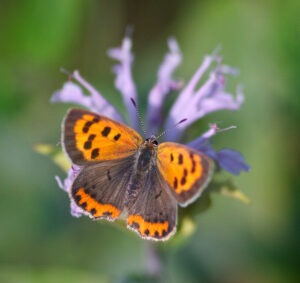
Photo by daveumich
AMERICAN COPPER
Lycaena phlaeas
Host Plants: sheep sorrel
Fun Fact: This butterfly is one of the smallest on the list and is often confused for a tiny brown moth. Its antennae, wing placement, and daytime activity show that it is indeed a butterfly, not a moth!
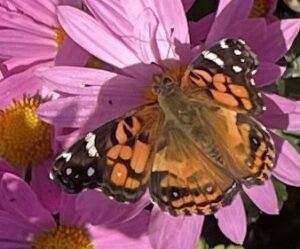
Photo by Clara Aus
AMERICAN LADY
Vanessa virginiensis
Host Plants: asters, daisies, everlastings, artemisia
Fun Fact: The American lady butterfly looks very similar to the painted lady butterfly, with the exception of one little white dot on the forewings. This butterfly is a small to medium size native.
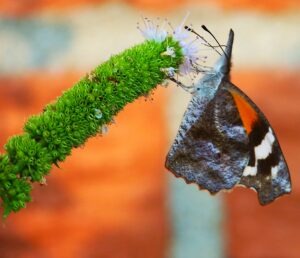
Photo by Theophilus Photography
AMERICAN SNOUT
Libytheana carinenta
Host Plants: hackberry
Fun Fact: This butterfly is named after its long nose or ‘snout’! It is small to medium-sized as an adult. There are about 10 species of snout butterfly around the world, but this is the only one that is found in the United States!
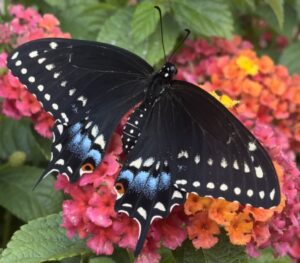
Photo by Clara Aus
BLACK SWALLOWTAIL
Papilio polyxenes
Host Plants: golden alexander, parsley, dill, fennel, carrots, Queen Anne’s lace
Fun Fact: The black swallowtail caterpillar goes through many different ‘instars’ or stages of growth. In the first few stages, it looks like bird poop, and then it becomes a beautiful striped green and yellow. It also has an osmeterium, an organ it ejects from its head that looks like a forked snake tongue and smells bad to predators.
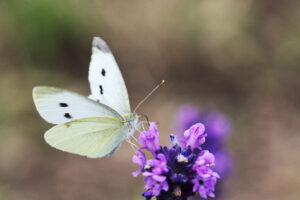
Photo by www.holgersbilderwelt.de
CABBAGE WHITE
Pieris rapae
Host Plants: cabbage, mustard, nasturtium
Fun Fact: This is one of the most common butterflies in Virginia, since its host plants are often grown on farms or in home gardens. The caterpillars are green and smooth, to blend in with cabbage or other green plants.
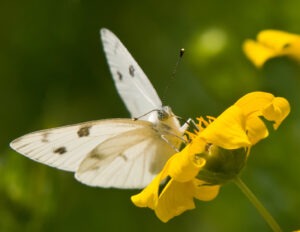
Photo by jim_mcculloch
CHECKERED WHITE
Pontia protodice
Host Plants: flowers and seedpods of mustard
Fun Fact: The checkered white butterfly uses special UV reflectivity to find their mate. Did you know butterflies can see Ultra-Violet light? Males of this species prefer younger females that have more UV reflectivity on their wing scales, as opposed to older females that have lost scales and have worn wings.
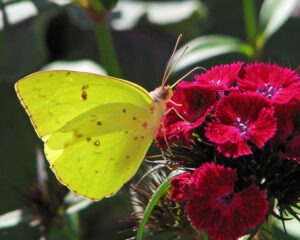
Photo by Vicki’s Nature
CLOUDLESS SULPHUR
Phoebis sennae
Host Plants: wild senna, legumes
Fun Fact: This butterfly is part of the Pieridae family, a group of white and yellow butterflies. Butterflies got their name from similar yellow butterflies in England where they thought it looked like ‘butter flying’.
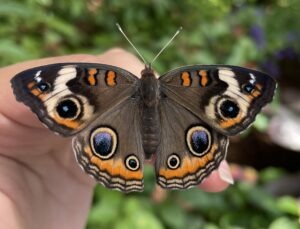
Photo by Clara Aus
COMMON BUCKEYE
Junonia coenia
Host Plants: plantains, false foxglove, loosestrife, toadflax, snapdragons
Fun Fact: The common buckeye is a small to medium-sized butterfly. It has many eyespots to help distract predators. If a predator tries to eat the butterfly, they will often go for the eyes which distract it from the main body of the butterfly.
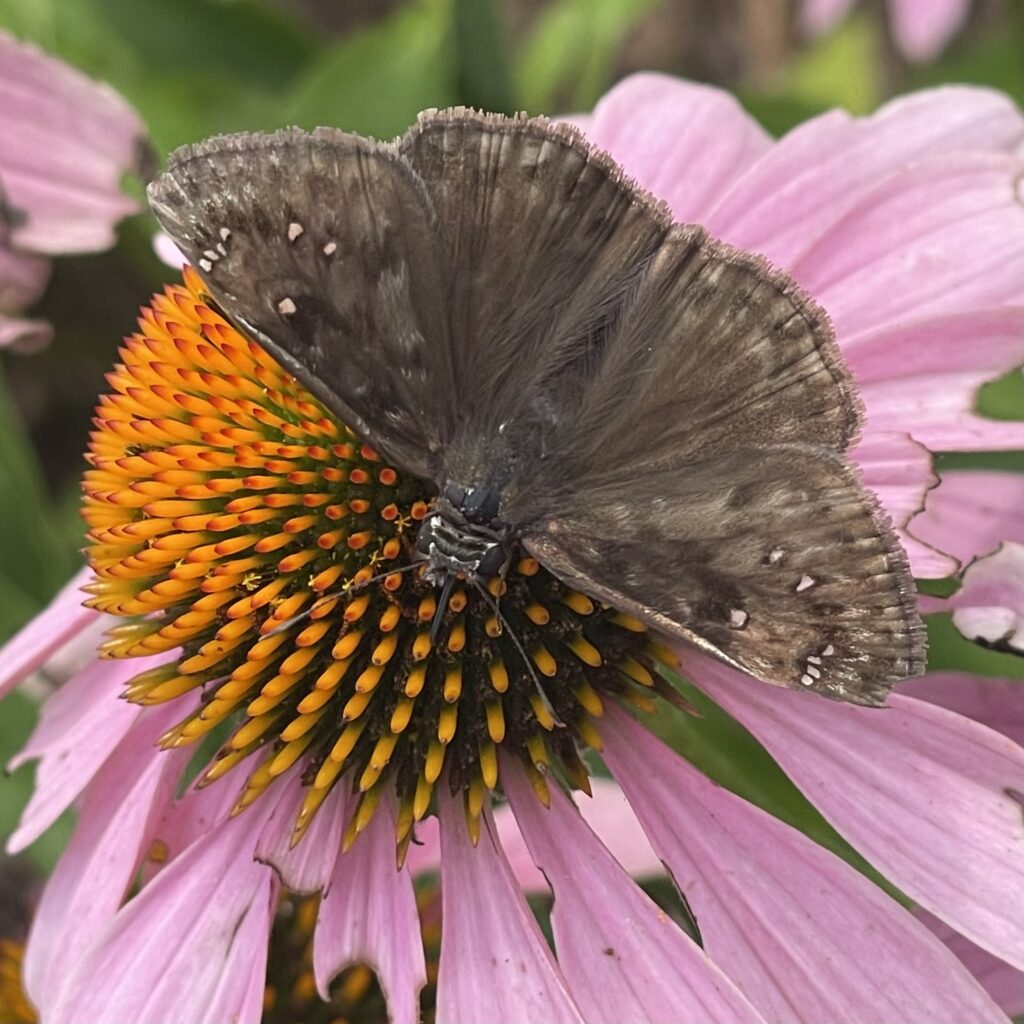
Photo by Clara Aus
COMMON SOOTY WING
Pholisora catullus
Host Plants: pigweed
Fun Fact: This butterfly is a type of skipper, which means it is in the family Hesperiidae and it folds its wings inwards instead of behind them like most butterflies. To identify a skipper, look for ‘recurved’ antennae, which look like typical butterfly antennae with a curved tip.
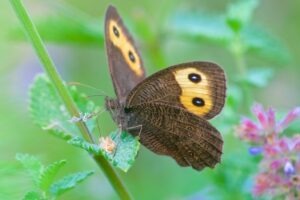
Photo by Distant Hill Gardens
COMMON WOOD NYMPH
Cercyonis pegala
Host Plants: Virginia native grasses
Fun Fact: The common wood nymph butterfly prefers to spend time in sunny meadows, fields, and prairies. They even have been found to have ears on their forewings that can hear sounds at low frequencies!
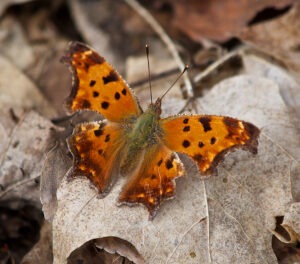
Photo by daveumich
EASTERN COMMA
Polygonia comma
Host Plants: hops, elm, nettle
Fun Fact: The eastern comma butterfly is named for a small silver mark on the underside of its hindwings. The mark looks like a comma, or a small silver curve.
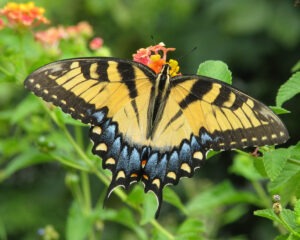
Photo by Vicki’s Nature
EASTERN TIGER SWALLOWTAIL
Papilio glaucus
Host Plants: willow, cherry, tulip tree, poplar, basswood, birch
Fun Fact: This butterfly is the state insect of Virginia! It is one of the largest native butterflies, and females are typically larger than males. Males are yellow and black, while females like the picture on the right are yellow, black, and blue. The Eastern tiger swallowtail is a butterfly you definitely want to see in your native Virginia butterfly garden.
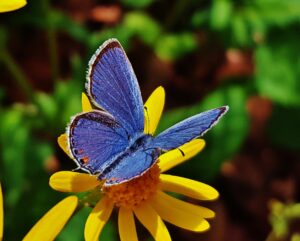
Photo by matthewbeziat
EASTERN TAILED BLUE
Everes comyntas
Host Plants: legumes, especially clover, trefoils, and peas
Fun Fact: This butterfly is one of the smallest butterflies on the list and belongs to the family Lycaenidae. All butterflies of this family are small blue and gray butterflies that are common in Virginia.
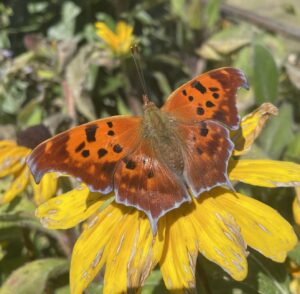
Photo by Clara Aus
EASTERN QUESTION MARK
Polygonia interrogationis
Host Plants: hops, elm, nettle, hackberry, basswood
Fun Fact: The eastern question mark butterfly is named after a small silver mark on its underside that looks like a question mark. Very similar in appearance to the eastern comma, the best way to tell them apart is to look for what type of punctuation mark is on the wings.
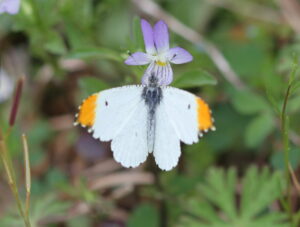
Photo by DrPhotoMoto
FALCATE ORANGE TIP
Anthocharis midea
Host Plants: peppergrass, rock cress, bitter cress
Fun Fact: This butterfly is rather small, and is in the Pieridae family with other white, yellow, and orange butterflies. Only males have the signature orange tips on their forewings, while females are completely white.
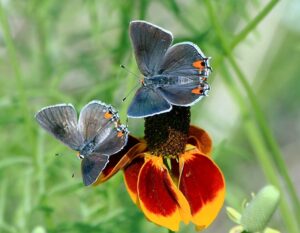
Photo by TexasEagle
GRAY HAIRSTREAK
Strymon melinus
Host Plants: legumes, mallows
Fun Fact: These butterflies are part of the Lycaenidae family of small blue and gray butterflies. The small tails on their hindwings earned them the name ‘hairstreaks’.
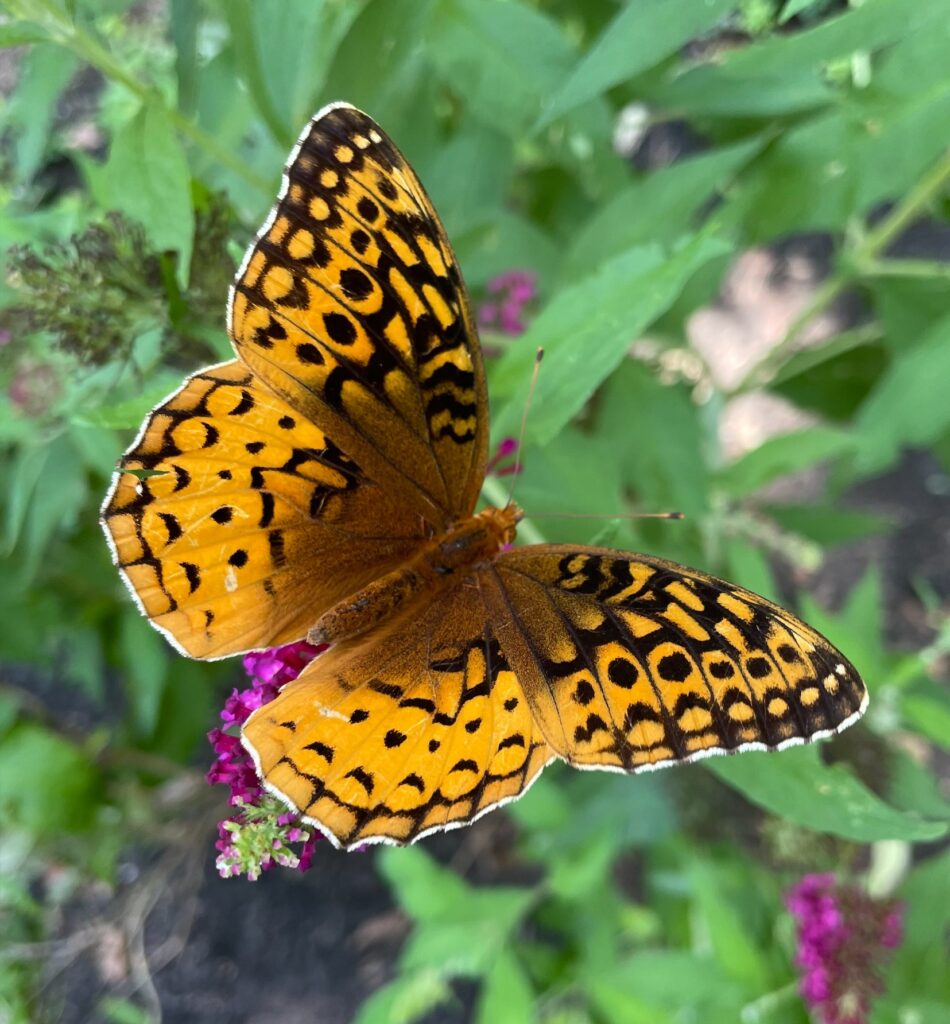
Photo by Jan Carpenter
GREAT SPANGLED FRITILLARY
Speyeria cybele
Host Plants: violets
Fun Fact: The great spangled fritillary butterfly is a gorgeous black, yellow, and brown markings. The underside of its wings display lots of scattered metallic silver spots that helped it earn the name ‘spangled’.
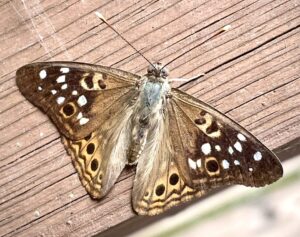
Photo by Clara Aus
HACKBERRY EMPEROR
Asterocampa celtis
Host Plants: hackberry
Fun Fact: The adult hackberry emperor butterflies prefer to eat rotting corpses, instead of flower nectar!
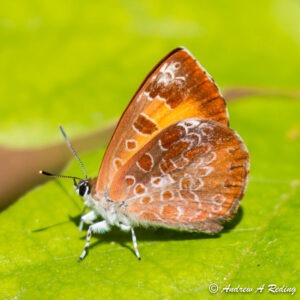
Photo by Andrew Reding
HARVESTER
Feniseca tarquinius
Host Plants: *caterpillar eats aphids not plants*
Fun Fact: The harvester butterfly is especially unique because it does not have a host plant! Instead, this little guy eats aphids from plants, which can help the plants stay healthier.
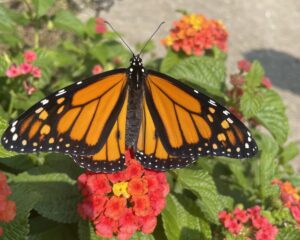
Photo by Clara Aus
MONARCH
Danaus plexippus
Host Plants: milkweed
Fun Fact: The monarch butterfly has the longest migration of any insect, traveling up to 3,000 miles to find warm weather during the colder months. To tell the males and females apart, look for two spots on the hindwings. Males, like the one in the picture, have the spots, while females do not. The monarch is an exciting sight in a native Virginia butterfly garden.
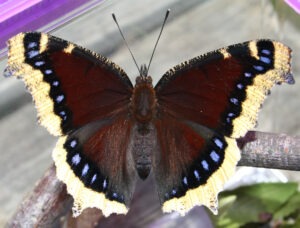
Photo by wanderingnome
MOURNING CLOAK
Nymphalis antiopa
Host Plants: willow, birch, elm, hackberry, cottonwood
Fun Fact: In the Germanic languages, the name for this butterfly literally translates to ‘mourning cloak’ and has been described as a girl in mourning with a brightly colored dress peeping out from the bottom. In England, it is called the grand surprise or the Camberwell beauty.
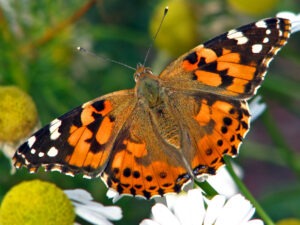
Photo by Marko_K
PAINTED LADY
Vanessa cardui
Host Plants: thistle, daisies, hollyhock, mallow, legumes
Fun Fact: The painted lady butterfly is often used as an educational tool in at-home butterfly-rearing kits to teach about the life cycle of a butterfly as they are particularly hardy and common in the Eastern United States.
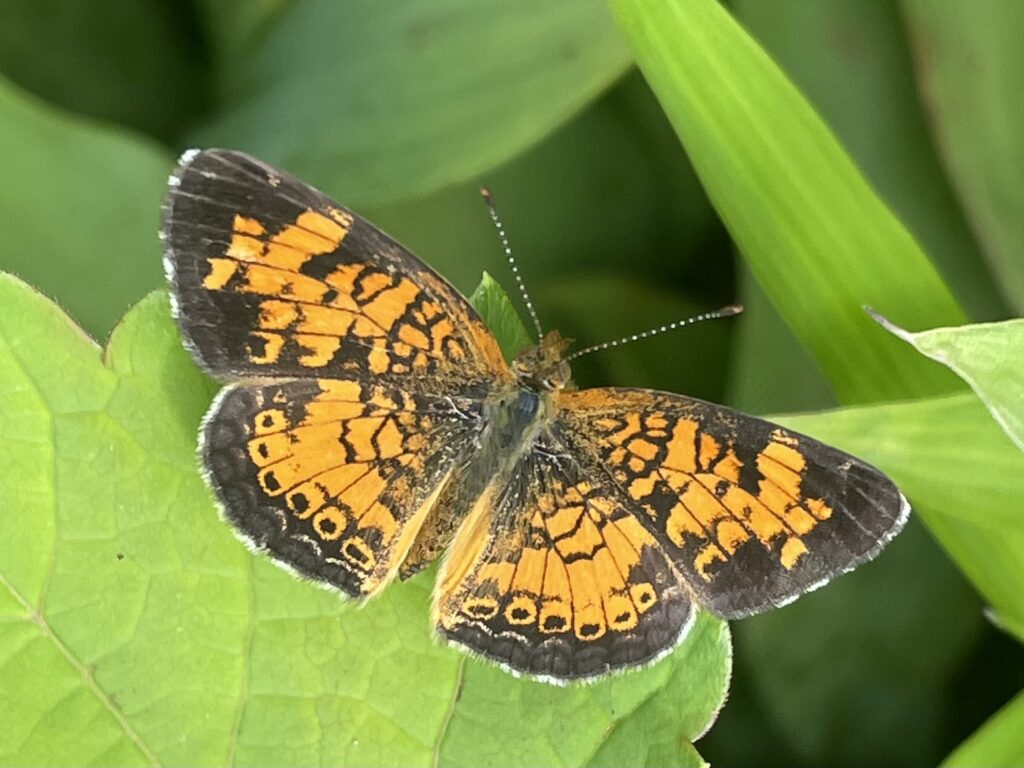
Photo by Clara Aus
PEARL CRESCENT
Phyciodes tharos
Host Plants: aster
Fun Fact: The caterpillars of the pearl crescent butterfly are gregarious, which means that they are social and like to hang out in groups for protection. You might find large groupings of them on asters in your garden.
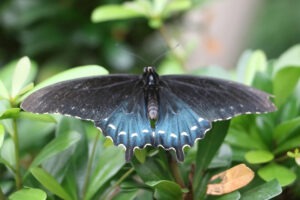
Photo by greyloch
PIPEVINE SWALLOWTAIL
Battus philenor
Host Plants: pipevines, especially Dutchman’s pipe and Virginia snakeroot
Fun Fact: The pipevine swallowtail is a large butterfly with iridescent blue and black wings. The caterpillars use the toxins from their host plant to become toxic themselves, and many other butterfly species mimic them for this reason.
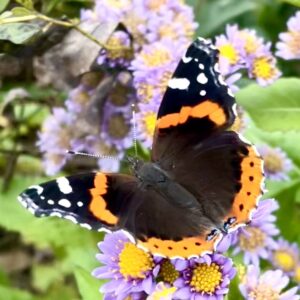
Photo by Clara Aus
RED ADMIRAL
Vanessa atalanta
Host Plants: nettle, false nettle, hops
Fun Fact: The caterpillar of the red admiral butterfly likes to hide inside folded leaves. As an older caterpillar, they are able to spin silk attached to a leaf, and as the silk shrinks, it wraps the leaf around the caterpillar for protection. Like the monarch, these butterflies also migrate to find warm weather, however they don’t go as far as the monarch is known to.
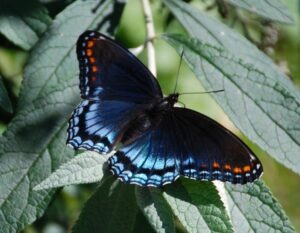
Photo by jjjj56cp
RED-SPOTTED PURPLE / WHITE ADMIRAL
Limenitis arthemis
Host Plants: willow, poplar, wild cherry, cottonwood
Fun Fact: This butterfly species is known for having two major color patterns, the red-spotted purple on the right, and the white admiral below. White admirals are most often found in the northern US, while red-spotted purples are typically found in the South. Since their populations overlap, they often hybridize and create new mixtures of colors and patterns.
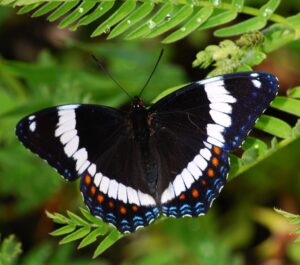
Photo by BugMan50
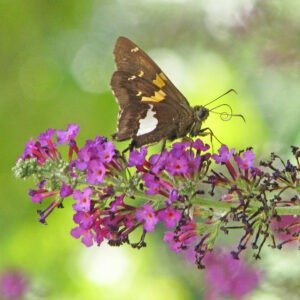
Photo by Vicki’s Nature
SILVER-SPOTTED SKIPPER
Epargyreus clarus
Host Plants: legumes
Fun Fact: Skippers are a type of butterfly that folds their wings inwards instead of behind them, creating a unique shape when they are at rest. Unlike most butterflies, they have recurved antennae, which means each antenna has a little hook at the tip. The silver-spotted skipper is one of the largest skippers, and has two bright silvery white spots, one on each hindwing.
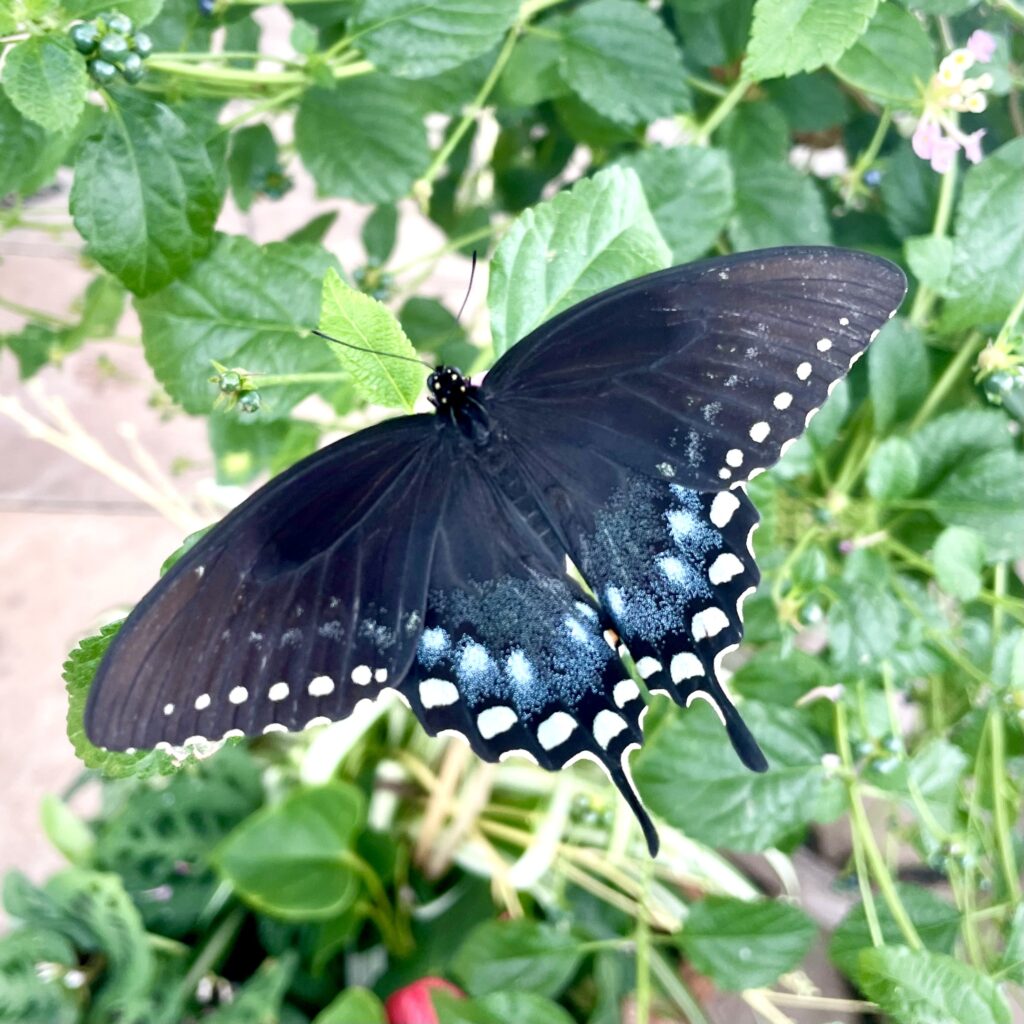
Photo by Clara Aus
SPICEBUSH SWALLOWTAIL
Papilio troilus
Host Plants: spicebush, sassafras
Fun Fact: Like other swallowtails, the spicebush swallowtail caterpillar has an osmeterium to ward off predators. Females of this species are often found in meadows and open fields, while males tend to prefer swampy areas. When males find a potential female mate, they will perform courtship dance in hopes that she will accept.
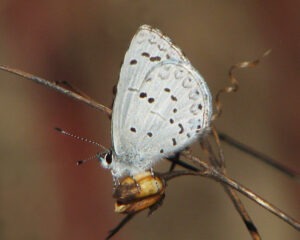
Photo by Vicki’s Nature
SPRING AZURE
Celastrina ladon
Host Plants: dogwood, wild cherry, viburnum, snakeroot, blueberry
Fun Fact: This species of butterfly goes through a period of dormancy called diapause. When they go into their chrysalis, they will either emerge normally, or stay inside until temperatures are just right for their ideal environment.
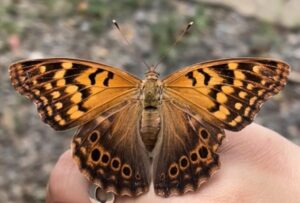
Photo by Clara Aus
TAWNY EMPEROR
Asterocampa clyton
Host Plants: hackberry
Fun Fact: The tawny emperor butterfly is known to be most active from June to October. Closely related to the hackberry emperor, but less common, they similarly prefer rotting corpses, fruit, tree sap, and animal feces to flower nectar.
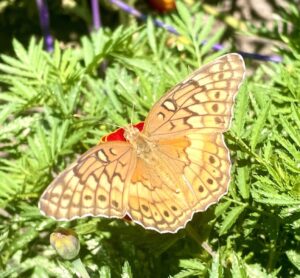
VARIEGATED FRITILLARY
Euptoieta claudia
Host Plants: violets, maypop, passionflower
Fun Fact: These butterflies are called ‘fritillaries’ which comes from the Latin word ‘fritillus’ meaning chessboard, in reference to their checkered pattern. Unlike the spangled fritillary, the variegated fritillary does not have silver spots on the hindwings and is much smaller.
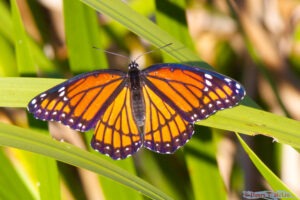
Photo by hmclin
VICEROY
Limenitis archippus
Host Plants: willow, poplar, aspen, native Virginian fruit trees
Fun Fact: This butterfly looks a lot like the monarch butterfly (Danaus plexippus) however, they are actually not closely related. Over time, the viceroy started to mimic the monarch because the monarch is toxic to eat, and this affords it some extra protection from predators. The main difference between the two is that viceroys have a horizontal line on their hindwings while monarchs do not!
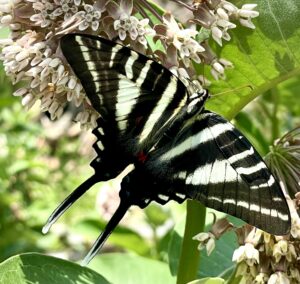
Photo by Clara Aus
ZEBRA SWALLOWTAIL
Eurytides marcellus
Host Plants: pawpaw
Fun Fact: The caterpillars of the zebra swallowtail have been found to sometimes be cannibalistic. If they run out of food, they will eat another caterpillar! To avoid this, female butterflies will lay only one egg per leaf or sometimes per plant, so that they are less likely to run into each other. Many other types of butterflies lay their eggs in large groups.
We hope you enjoy this information about Virginia butterflies and are inspired to start your own native Virginia butterfly garden. You can also learn more at the Garden’s M&T Bank Butterflies LIVE! exhibit.